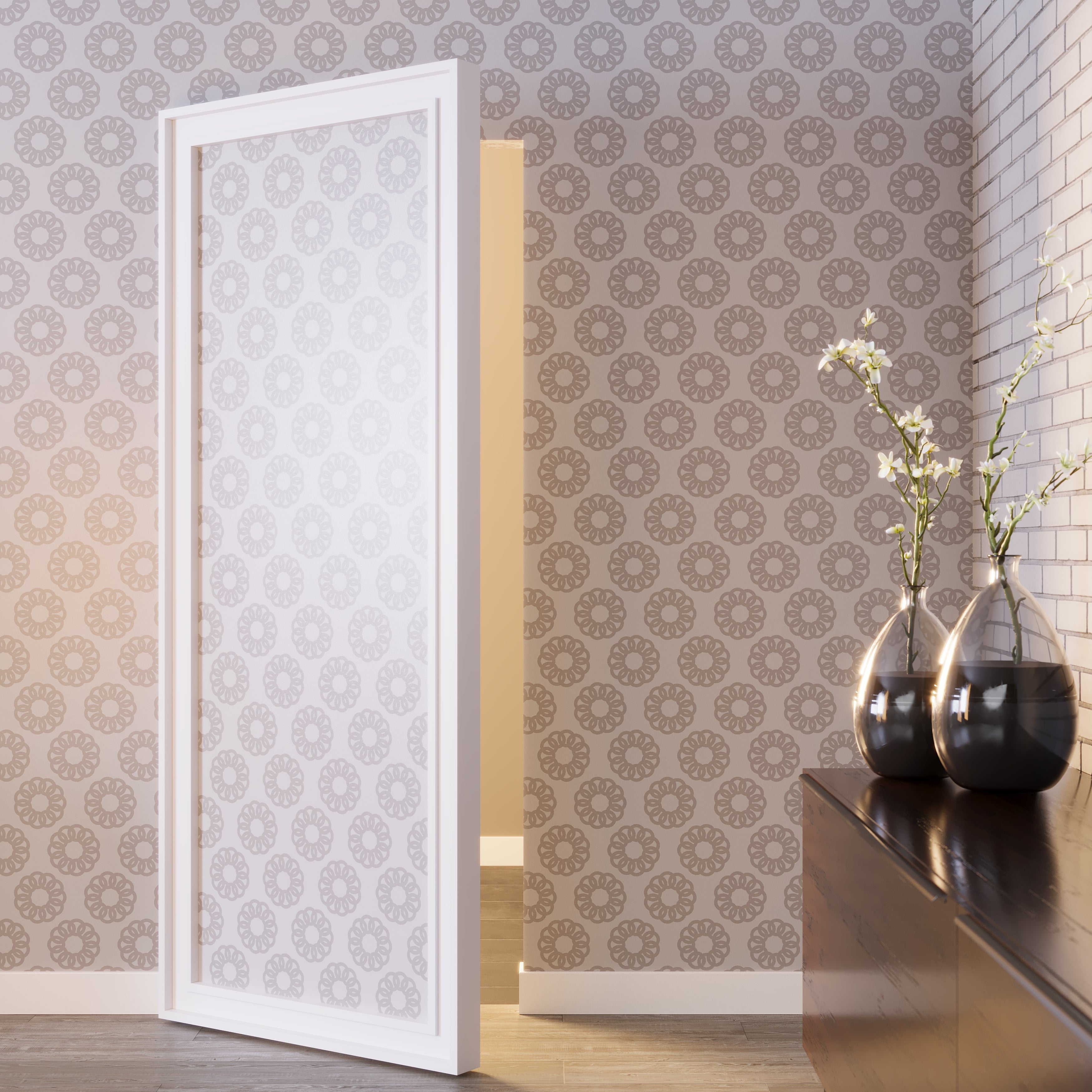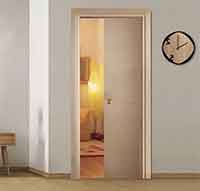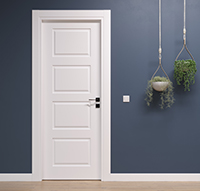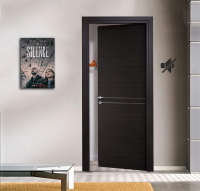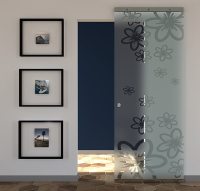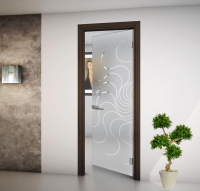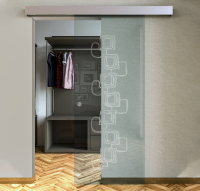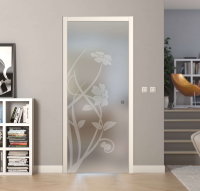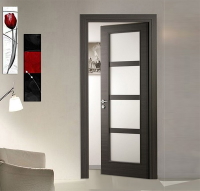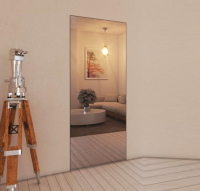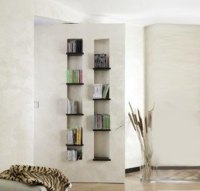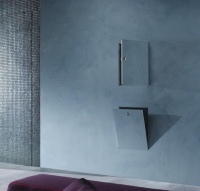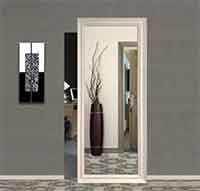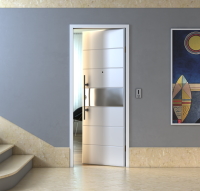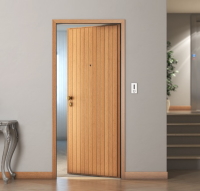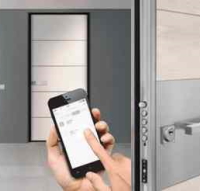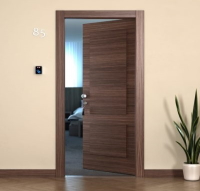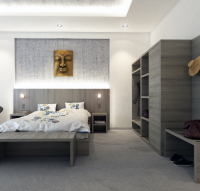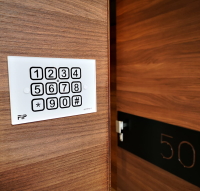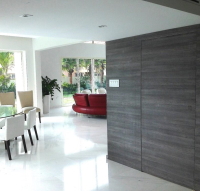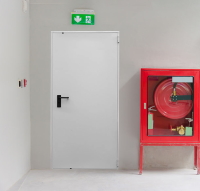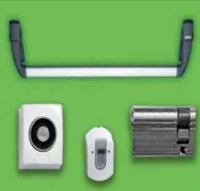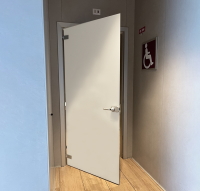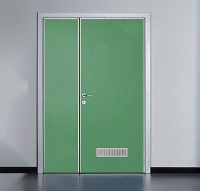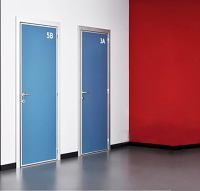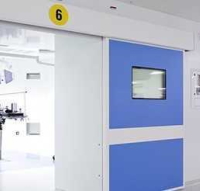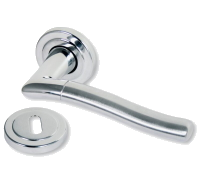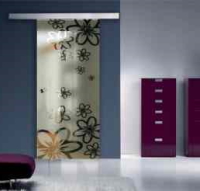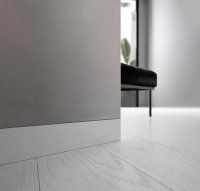.png)
75% Architectural Barriers Bonus for Internal Doors.
1. What is the Architectural Barriers Bonus 2023
The Architectural Barriers Bonus 2023 is a 75% IRPEF deduction on expenses incurred to eliminate architectural barriers in existing buildings.
The maximum spending limit is 50,000 euros.
In the framework of the 2022 budget law (234/2021), the aim is to make residential spaces more inclusive and accessible to all, regardless of their physical condition or disability.
Thanks to a 75% tax deduction on IRES and IRPEF, interventions to remove architectural barriers in homes are incentivized. This bonus will be applicable for 2023, 2024 and 2025, and the maximum deduction will be divided into five annual installments.
The government aspires to reduce uncomfortable situations for people with mobility limitations, both temporary and permanent, by improving the accessibility and liveability of their domestic spaces.
The importance of doors
Doors, both armored and internal, are essential to allow easier access and passage from one environment to another. It is essential to choose doors with the right types of opening, dimensions and handles to make the spaces more livable.
The importance of elevators
Elevators can make a difference when it comes to accessibility, especially in multi-storey buildings. Their presence greatly facilitates the mobility of elderly people, those with mobility problems or those who use aids such as wheelchairs. The installation or modernization of elevators therefore represents a highly valuable intervention to break down architectural barriers.
The importance of home automation
Home automation, or home automation, represents another fundamental piece in the field of inclusiveness. Thanks to advanced technological solutions, it is possible to manage various aspects of the home, such as lights, thermostats and security systems, through voice commands or mobile devices.
This significantly increases the autonomy of people with disabilities or reduced mobility, allowing them to live more independently. Conclusion The budget law offers a significant fiscal incentive to break down architectural barriers and advanced application solutions such as elevators and home automation.
The goal is to promote a culture of accessibility and inclusion that can improve the quality of life for everyone, especially for those who are most vulnerable.
2. Who is entitled to the bonus
The Architectural Barriers Bonus 2023 is intended for a wide range of individuals interested in making environments more accessible. Here's who it's aimed at:
Natural persons
Institutions and companies
Public and private non-commercial entities
Simple societies
Professional associations
Owners of the property subject to the intervention
Condominiums that need to carry out works to remove architectural barriers
Lessees and borrowers can benefit from the bonus, but must have written permission from the property owner. For example, if you rent and need to replace swinging doors with sliding doors to facilitate movement for a family member in a wheelchair, you can access the bonus, but you must obtain approval from the homeowner.
Special requirements
It is not mandatory for there to be a disabled person or someone over 65 in the home. The incentive aims to create obstacle-free environments regardless of the presence of specific needs on the part of the occupants.
3. How the bonus works
The Bonus is valid for expenses from 1 January 2022 to 31 December 2025. The deduction is 75%, with a maximum ceiling that varies depending on the type of building:
€5000 for single-family buildings or independent units
€4000 per unit in buildings with 2-8 units
€3000 per unit in buildings with more than 8 units
The deduction is divided into 10 annual installments.
4. Eligible expenses
Building interventions to eliminate architectural barriers
Plant automation
Disposal and reclamation of replaced materials
Expenses for newly built properties are not eligible
5. Eligible expenses, some examples
Installation of elevators
Door extension
Creation of ramps
Lock automation
6. What is meant by architectural barriers
Architectural barriers mean all those physical obstacles that limit or prevent the full enjoyment of public or private spaces, structures and services by people with reduced mobility. These obstacles can occur both internally and externally and make it difficult for the person to move freely and independently. The types of architectural barriers are:
Physical:
Steps and Steps: Common obstacles that prevent access to buildings or spaces.
Narrow Doors: Small doors can pose a barrier to those who use wheelchairs or other mobility aids.
Partitions: These internal dividers can limit space for maneuver and movement.
Sensory:
Inadequate Signage: The absence or poor visibility of signs can be a problem for people with visual or hearing disabilities.
Inadequate Lighting: Poor lighting can be an obstacle for people with visual impairments.
Communicative:
Non-Accessible Information: The absence of information in accessible formats (e.g., Braille or sign language) can be considered an architectural barrier.
Social and Legal Impact
Architectural barriers not only limit physical mobility, but also influence social integration and personal autonomy. In many countries, the removal of these barriers is not only an ethical issue but also a legal one, subject to regulations and sanctions.
7. Specifications for Concessions on Internal Doors and Measures
Eligibility criteria
To be eligible for the benefit, internal doors must comply with specific accessibility and safety criteria, as established by Ministerial Decree 236/1989. The ultimate goal is to make habitable spaces accessible to all, regardless of their physical conditions.
Types of intervention
Widening the width of existing doors: to allow easier passage of wheelchairs or other mobility aids.
Installation of new doors with regulated width: they must have a minimum clear opening of 75 cm and a maximum width of 120 cm. The use of sliding or folding doors can be a valid alternative, but the option with a saloon-type opening should be avoided.
Door automation: to facilitate opening and closing, especially for people with limited strength.
Minimum door width: 80 cm
Minimum door height: 210 cm
Standard height for handles: between 90 and 110 cm from the floor.
Height for handles in environments intended for children or people with reduced mobility: between 70 and 80 cm from the floor.
Ergonomic handles: the handles must be ergonomically shaped and easily usable, so that they can be operated with a pressure of no more than 8 kg.
Other Specifications: The space in front of and behind the door must allow maneuvers to be carried out with a wheelchair or other mobility aid.
Glass: If the door is equipped with glass, these must not reach less than 40 cm from the ground to avoid risks.
These specifications are essential to guarantee the accessibility and comfort of all users, and are in line with the possibility of taking advantage of the 75% bonus for the elimination of architectural barriers in 2023.
8. Specifications for Lift Installation Benefits
Eligibility criteria
To qualify for tax breaks, elevators must meet specific accessibility and safety requirements. They must be designed and constructed so as to be usable by people of all ages and with various needs, including those with physical limitations or reduced mobility.
Types of Intervention
The interventions that can benefit from the concessions include:
Installation of new elevators: This involves the installation of completely new elevators that meet accessibility and safety requirements.
Modernization of Existing Lifts: This includes the modernization of lifts already in operation to adapt them to new accessibility standards. Modernization may include installing new control panels, adding voice announcements, securing doors, and other similar improvements.
Standard sizes
To ensure accessibility, elevators must adhere to the following standard measures:
Minimum Car Dimensions: Lifts must have a minimum car size of 110cm x 140cm to ensure adequate space for wheelchairs and other mobility aids.
Minimum load capacity: The minimum load capacity of lifts must be at least 400 kg to ensure that they can carry more people at the same time, including possible mobility aids such as wheelchairs.
Recommended Additional Features
Braille panels: To facilitate use by people with visual disabilities, the inclusion of Braille panels next to the control buttons is recommended.
Voice Announcements: To assist people with visual or hearing impairments, voice announcements indicating the current floor and direction of movement are strongly recommended.
Security Camera: A security camera inside the cabin can increase the level of security and can be useful in case of emergencies.
Emergency System: An emergency communication system, such as a distress button or hotline, should be available inside the cabin at all times.
In conclusione, le agevolazioni per l'installazione o l'ammodernamento degli ascensori mirano a rendere gli edifici più accessibili e sicuri. Seguire i criteri di ammissibilità e gli standard di misura non solo vi qualifica per detrazioni fiscali significative, ma contribuisce anche a creare un ambiente più inclusivo.
Gli interventi agevolabili possono comprendere:
- Installazione di nuovi ascensori
- Ammodernamento degli ascensori esistenti per renderli conformi agli standard di accessibilità
- Misure standard
- Dimensioni minime della cabina: 110 cm x 140 cm
- Portata minima: 400 kg
9. Specifications for Lock Automation Concessions
Eligibility criteria
Automated locks must comply with specific security and accessibility standards to qualify for tax breaks. They must allow easy opening and closing, and must be designed so that they can be used by everyone, including individuals with limited motor skills.
Types of Intervention
The interventions that can benefit from the concessions include:
Installation of New Electronic Locks: This involves the replacement of traditional locks with new advanced electronic models that meet the eligibility criteria.
Upgrading Existing Locks: This includes adding automation modules to existing locks, allowing for example opening and closing via smartphone or voice commands.
Required features
Multimedia Controls: Locks should have the ability to be opened through various methods, such as mobile devices, voice controls, or even biometric recognition.
Manual Backup System: In the event of a malfunction of the electronic system or a power failure, it must be possible to open the lock using a manual backup system, such as a physical key or a battery-operated control panel.
Validity for hotels
The discounts are also applicable to hotel environments, provided that the locks comply with the eligibility criteria described. This can represent a significant benefit for hotels aiming to improve accessibility and convenience for their guests, as well as providing an additional layer of security.
Note: Hotels may also benefit from increased tax deductions if the installation of such locks is part of a larger barrier-free project, such as installing wheelchair ramps or elevators suitable for people with limited mobility .
In conclusion, lock automation is not only a matter of convenience but also of inclusiveness and accessibility. The tax breaks provided aim to encourage the adoption of these technologies, making living and commercial spaces more welcoming and accessible for all.
In conclusion, eligible expenses may include:
Installation of new electronic locks
Updating existing locks with automated opening and closing systems
Required features
Ability to open the lock with mobile devices or voice controls
Manual backup system in case of malfunction or power failure
10. How to get the Bonus
Obtaining the bonus for the removal of architectural barriers requires a series of specific steps that must be carried out scrupulously to guarantee the right to the deduction. Here is a detailed guide on how to proceed:
Documentation of Expenses
Invoices or Tax Receipts: The first fundamental step is to obtain and keep all the invoices or tax receipts that certify the interventions carried out. These documents must be detailed and clearly indicate the nature of the works and materials used. Make sure the provider includes all relevant information, such as a description of the procedure, individual costs and the total amount paid.
- "Parlanti" Tax Benefit Transfers: In the context of tax benefits, it is strongly recommended to use the "Parlanti" Tax Benefit Transfer, often called the "Parlanti" Tax Benefit Transfer. This type of transfer is specifically designed for tax deductions and allows you to enter all the data necessary to benefit from the relief, such as the nature of the intervention and the reference to the law or resolution that makes it eligible for relief.
Required Information: Generally, a speaking transfer will require the insertion of specific data, such as the tax code of the beneficiary of the deduction and of the person making the transfer, the reason indicating the type of work carried out and the reference to current legislation (in in this case, AdE Resolution no. 19 of 2 May 2023).
Reason for the transfer: It is crucial that the reason for the transfer is carefully drawn up, as it must be clearly attributable to the type of subsidized intervention. For example, "Transfer for the removal of architectural barriers, in compliance with AdE Resolution no. 19 of 2 May 2023".
Documentation: Once the speaking transfer has been made, you will receive a receipt which will constitute proof of the operation and which will be necessary to benefit from the bonus. Keep this receipt carefully together with your invoices or tax receipts.
Amount and Date: Make sure that the amount and date of execution of the transfer coincide with those indicated on the invoice or tax receipt. Make the transfer before the expiry of any deadlines established by law to avoid losing the right to the deduction. Using the talking transfer for tax benefits is a safe and traceable way to ensure that all the details of the transaction are clearly documented, thus reducing the risk of future problems with the Revenue Agency.
- Sending documentation: Check which documents must be sent to the Revenue Agency or other competent bodies.
Terms and Conditions: Familiarize yourself with any special terms and conditions, such as time limits for submitting documentation or specific circumstances that may disqualify you from the bonus.
Eligibility Criteria: Please ensure you meet all eligibility criteria as specified in the Resolution. This may include details such as minimum door dimensions, handle heights, etc.
Final Note: Given the complexity of the procedures and the possibility of future rule changes, it is always advisable to consult a legal or tax expert to ensure you comply with all requirements and maximize your benefit.
11. Transfer of Credit and Discount on the invoice
As of June 2023, the legislation relating to the 75% bonus for the removal of architectural barriers is still being clarified. However, some key elements are already known and can significantly influence the decision to proceed with adaptation interventions.
Fiscal detraction
The law allows you to deduct 75% of the expenses incurred for adaptation interventions, such as the modification or installation of compliant doors. This deduction can be spread over five years, allowing for a significant payback on your investment.
Points to Consider:
The law allows you to deduct 75% of the expenses incurred for adaptation interventions, such as the modification or installation of compliant doors. This deduction can be spread over five years, allowing for a significant payback on your investment.
Points to Consider:
- Technical Certification: A fundamental requirement to access this incentive is the intervention of a sworn technician. This figure will have to certify the need for the intervention based on the characteristics of the property and certify the correct installation of the new products.
- Regulatory Risks: There is the possibility that the Revenue Agency introduces new criteria or limitations, which could change the conditions for accessing the bonus.
Discount on Invoice and Transfer of Credit
In addition to the tax deduction, the bonus also provides the possibility of opting for an invoice discount or credit transfer. However, both of these methods have higher levels of complexity and risk.
Practical Tips:
Coordination with Retailers: If you choose to use one of these methods, it is essential to coordinate with the point of sale, as some retailers may advise against this option due to its complexity.
Legally Required Requirements: Before proceeding, it is best to consult a local reseller to learn more about the specific requirements imposed by law, including spending limits according to DEI price lists.
Credit Transfer: This option requires a specific bureaucratic process and can be difficult to manage. An authorized entity must agree to purchase the tax credit, making this option less straightforward and more complicated to implement.
In conclusion, it is essential to make a careful assessment of the various options and associated risks. We recommend consulting with tax and legal experts to ensure you get the maximum benefit from the 2023 barrier removal bonus.
12. Regulatory references
Budget Law 2022 (article 1, paragraph 42)
Maneuver 2023
AdE Resolution n. 19 of 2 May 2023
13. Other help and references
Keep an eye on communications from the Revenue Agency and other entities for any updates or new incentives.


